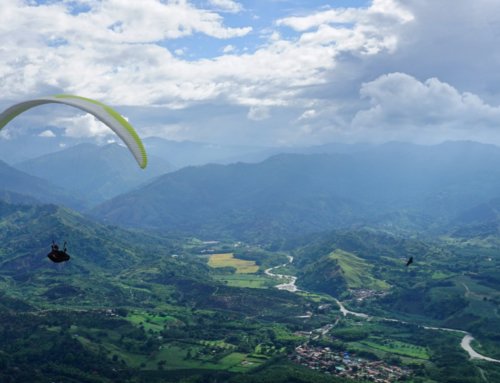One of the pilots I know in my local club had reason to deploy his emergency parachute this summer, when turbulence at the edge of a strong thermal caused a big collapse and he found himself gift wrapped. His Beamer opened quickly, and after a short period of going up again (at 1.5m/s under reserve) he escaped the clutches of this malign thermal and landed safely. I know this is a topic that probably no one likes to think about, but his successful deployment prompted me to reflect: what might go wrong to prevent our reserve being the life saver it’s designed to be, and what can we do to ensure it will work properly?
Before thinking about the reserve itself, it’s worth remembering that one of the biggest factors preventing successful deployment is the pilot. If you’re low and you lose control of your wing, there’s very little time available, so don’t delay. And don’t let unfamiliarity cause potentially fatal fumbling.
If you’re high then maybe there’s time to try and recover the wing. But bear in mind that a bad cravat could cause a high-G autorotation to develop quickly, and the disorientation might delay or even prevent you getting to the handle. I know of two cases in the past year where lengthy spiral descents have been witnessed without a reserve being deployed, perhaps because the pilot didn’t throw the reserve before blacking out.
So you’ve grabbed the handle and got the reserve out: it’s going to deploy OK, isn’t it? Sadly, not necessarily. I shared a video to the Aerofix Facebook page recently of a pilot messing up his infinity tumble and throwing his reserve. The problem, as he recognised in his excellent write-up, was that his throw was terrible. More of a drop than a throw. So although his reserve began to open, it immediately became tangled in the lines of his main and was useless. Fortunately, he was flying with a second reserve. This time he prepared by watching the rotation of his wing, and then threw it hard, away from the main – and thankfully it worked.
Another thing to bear in mind is that downplaning can significantly increase the rate of descent. EN certification requires a maximum sink rate of 5.5 m/s at the top of the weight range, which still requires a good PLF to avoid the risk of injury on landing. But I’ve seen reports of nearly 10 m/s when the main wing has recovered and begun to fly again, fighting against the reserve. If you were unlucky enough ever to be in this situation, one technique is to pull hard and hold in the B lines to disable the wing again, and then pull the main canopy in.
Now back to the reserve itself. As you’d expect at Aerofix, rarely a day goes by without another reserve being repacked, so we’re familiar with the manuals of all the common reserves and harnesses. If something unfamiliar comes in, we’ll always check the manual in case there’s some particular quirk that needs to be considered. However, it’s clear from some of the kit we get in that on the previous repack, a certain amount of creativity has been substituted for knowledge, occasionally with potentially dangerous consequences.
It’s vital that when you pull the handle, the pins must release readily. However, if the strap from the handle to the reserve is too tight, perhaps because the reserve was inserted the wrong way round with the handle attachment point at the back of the compartment, then this may not be possible, or it may require a very large force.
If the reserve is a bad fit for the harness compartment (simply too large, or folded into the wrong shape) or the wrong handle attachment point has been selected, the reserve can jam in the compartment and be extremely difficult to extract.
Some harness manufacturers are seeking to reduce the risk of incompatibility with the reserve by providing a harness-specific deployment bag. For example, Advance and Ozone both make harnesses that come complete with a deployment bag, and not simply a handle to attach to the inner bag supplied with the reserve. The reserve may need to be re-folded to fit the deployment bag, but these systems work extremely well.
The reserve and suspension lines are enclosed in a deployment bag, the final closure flap of which is secured by a loop of the suspension lines being held in place by an elastic mouthlock loop. After being thrown, the bag reaches the point where the bridle comes tight. When that happens, the loop of the suspension lines slips out of the mouthlock loop, allowing the bag to open. There can be two problems here: the mouthlock loop can be too tight or too loose. Too tight, (or if the loop of suspension lines is too long and has become tangled) and the loop of lines may not slip out of the mouthlock loop, so the bag will not open. If you throw your reserve and the bag does not open, grab the reserve bridle and pull it hard and as sharply as you can.
Too loose, and the lines may slip free inside the harness compartment during normal use: we had one instance this year where pulling the handle pulled the bag out of the harness, leaving the reserve inside the harness compartment. Deployment in these circumstances would have been extremely difficult and likely to fail.
So, perhaps an uncomfortable topic to contemplate, but hopefully this has given you some points to consider one autumnal evening.
If you want to chat anything through, we’re always happy to offer help and advice over the phone (01433 627195) or by email (info@aerofix.com).

